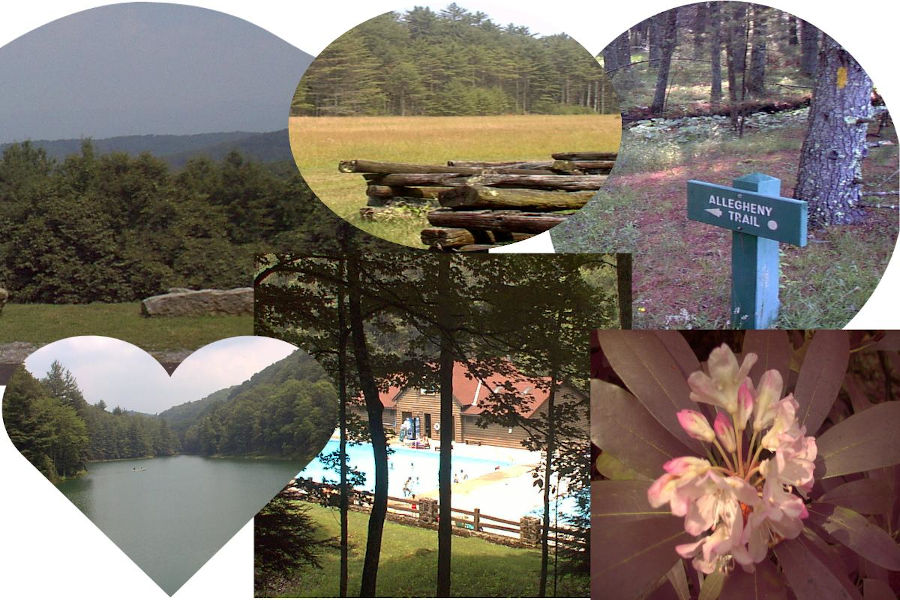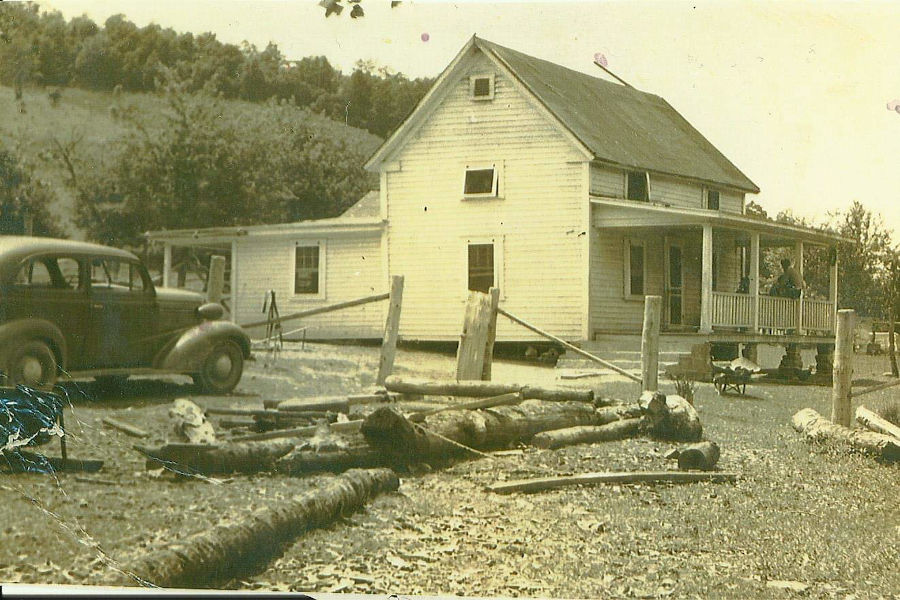
The Road Not Taken
Two roads diverged in a yellow wood,
And sorry I could not travel both
And be one traveler, long I stood
And looked down one as far as I could
To where it bent in the undergrowth;
Then took the other, as just as fair,
And having perhaps the better claim,
Because it was grassy and wanted wear;
Though as for that the passing there
Had worn them really about the same,
And both that morning equally lay
In leaves no step had trodden black.
Oh, I kept the first for another day!
Yet knowing how way leads on to way,
I doubted if I should ever come back.
I shall be telling this with a sigh
Somewhere ages and ages hence:
Two roads diverged in a wood, and I—
I took the one less traveled by,
And that has made all the difference.
Robert Frost – 1874-1963
The Farm on Chicken House Run Road
While growing up at Watoga State Park, there were many roads to take or not to take. Sometimes the road not taken might be the quickest route to the swimming pool.
My grandfather, Alfred G. Dean (1890-1973), known as “Pap,” and my grandmother, Ina C. Smith Dean (1894-1990), known as “Ma,” owned a farm that bordered Watoga in scenic Pocahontas County. Moreover, Pap was a superintendent of the Civilian Conservation Corps that helped build the park’s cabins, the swimming pool, and other infrastructure projects in the 1930s.
Ma and Pap’s 211-acre farm was at the end of Chicken House Run Road. The visual of that picturesque road comes to mind whenever I hear John Denver’s “Take Me Home, Country Roads.”
Gardens, Animals, Hay, Kate the Horse, and the 1800s
In the late 1960s and the early 1970s, my older brother, Ronnie, and I spent several summers working and playing at the farm where we learned how to harvest the bounty of large gardens, how to raise cattle, chickens, and hogs, and how to hoist bales of hay into the barn’s loft. Pap also taught us how to ride Kate, the farm’s workhorse.

Every evening, Ronnie and I brushed Kate’s glistening brown hair. Afterwards, we sat near Ma’s well-tended dahlias and peonies in the front yard shaded by the 60-year-old sugar maple tree. We were mesmerized as Pap and Ma told stories about the 19th Century (yeah, that would be in the 1800s) and the early 1900s.
The Road Not Taken to the Swimming Pool
In particular, in the mid-afternoons of one hot summer of 1972 (after the Big Boy tomatoes or the Kennebec potatoes were hoed), Ronnie and I were rewarded by being allowed to go to the park’s swimming pool about three miles away.
So, how did we get there? As a matter of fact, it wasn’t on Kate’s back.
Imagine this: We walked. However, most of the time, we ran more than we walked. And this is where the “road not taken” came into play.
When the dirt road a couple of miles from Ma and Pap’s home intersected with the park’s asphalt pavement not far from the north entrance to the park close to Beaver Creek Road, Ronnie and I had a decision to make: Continue to walk on the asphalt surface or venture along Laurel Trail, a narrow path veering off to the right. This trail was lined with elderberry bushes, thickets of briars, fallen trees, and mountain laurel (thus the trail’s name).
We could have chosen the easy way and avoided several leg scratches caused by thorns and further irritated by the pool’s chlorinated water. Yet, we chose a different road.
Laurel Trail’s Intoxicating Allure
Laurel Trail beckoned Ronnie and I to walk where the terrain, flora and fauna were more interesting. We sampled wild blackberries and elderberries, and oftentimes stopped to catch our breath, watching deer playing freely in the lush forest. The sounds of birds chirping and twigs snapping filled the air.
At the end of that road “less traveled” was our reward—the crystal-clear invigorating water of the swimming pool. Importantly, not once during that unforgettable summer did we ever say that the pool’s water felt cold!
Laurel Trail is a small part of 40 miles of trails nestled in the pristine wilderness of Watoga. What’s your trail adventure or “Road Not Taken” story during your visit to the park? Feel free to share those by emailing me at .
About the Author
For 16 years, John C. Dean lived on-site at Watoga until his dad, Vernon, retired after 43 years of service with the Division of Natural Resources. In 1976, the Deans moved to Ma and Pap’s farm on Chicken House Run Road.